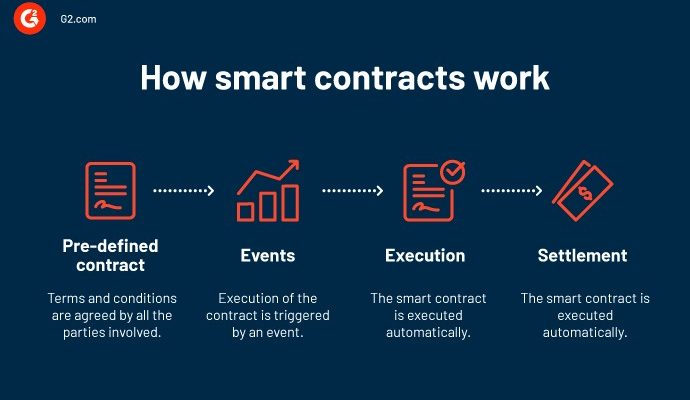Smart contracts are reshaping how agreements are made and executed in the digital age, offering a level of automation, transparency, and security that traditional contracts struggle to match. At their core, smart contracts are self-executing pieces of code stored on a blockchain. They contain the terms of an agreement written in programming language rather than legal prose, and once certain predefined conditions are met, the contract automatically carries out the agreed-upon actions. This eliminates the need for intermediaries, reduces the risk of human error, and ensures that transactions are executed exactly as intended.
The concept may sound abstract, but its applications are surprisingly practical. Imagine a freelance designer and a client agreeing on a project fee. Instead of relying on invoices and manual payments, they could use a smart contract that releases funds automatically once the final design file is uploaded and verified. The contract acts as a neutral enforcer, ensuring both parties fulfill their obligations without needing a third party to mediate. This kind of automation is particularly valuable in industries where trust is essential but difficult to guarantee, such as real estate, supply chain management, and digital content licensing.
Smart contracts operate on blockchain platforms like Ethereum, which support decentralized applications and programmable transactions. The blockchain serves as a secure, immutable ledger that records every interaction with the contract. Once deployed, the contract cannot be altered, which provides a high level of integrity and auditability. This permanence is both a strength and a limitation. On one hand, it ensures that the contract terms are tamper-proof. On the other, it means that any errors in the code must be addressed through additional contracts or updates, as the original cannot be changed retroactively.
The logic behind smart contracts is built using conditional statements—essentially, “if this, then that.” These conditions can be as simple or complex as needed. For example, a smart contract for a crowdfunding campaign might specify that funds are only released if a certain financial goal is met by a specific date. If the goal isn’t reached, the contract automatically refunds contributors. This kind of programmable trust reduces administrative overhead and enhances transparency, as all participants can verify the rules and outcomes directly on the blockchain.
One of the most compelling aspects of smart contracts is their potential to streamline business processes. In supply chain logistics, for instance, smart contracts can automate payments based on delivery confirmations. A shipment tracked via IoT sensors could trigger a payment once it arrives at its destination, reducing delays and disputes. In insurance, claims can be processed automatically when certain conditions are verified, such as weather data confirming a natural disaster. These use cases demonstrate how smart contracts can reduce friction, speed up operations, and lower costs by removing manual steps and intermediaries.
Despite their promise, smart contracts are not without challenges. Writing secure and reliable code requires technical expertise, and vulnerabilities can lead to unintended consequences. There have been high-profile cases where poorly written contracts were exploited, resulting in significant financial losses. This underscores the importance of rigorous testing, peer review, and ongoing monitoring. Legal recognition is another evolving issue. While smart contracts are enforceable in some jurisdictions, their status in others remains ambiguous. Businesses must navigate these legal landscapes carefully, especially when contracts involve cross-border transactions or regulatory compliance.
Interoperability is also a consideration. Not all blockchains support smart contracts, and those that do may use different programming languages and standards. This can create barriers to integration, particularly for enterprises that rely on multiple systems. Efforts are underway to develop cross-chain solutions and standardized frameworks, but widespread adoption will require collaboration between technologists, regulators, and industry stakeholders. The goal is to make smart contracts as accessible and reliable as traditional legal agreements, while preserving their unique advantages.
From a strategic perspective, smart contracts represent a shift in how businesses think about trust and automation. They enable organizations to codify relationships and transactions in a way that is both enforceable and transparent. This has implications not just for operational efficiency, but for governance, risk management, and customer experience. Companies that embrace smart contracts can offer faster, more reliable services, build stronger partnerships, and reduce exposure to fraud or miscommunication. As the technology matures, it’s likely to become a standard component of digital infrastructure, much like cloud computing or cybersecurity.
Ultimately, smart contracts are about more than just code—they’re about creating systems that reflect and enforce agreements with precision and fairness. They offer a glimpse into a future where business logic is embedded directly into the digital fabric of commerce, enabling transactions that are faster, smarter, and more secure. For organizations willing to invest in understanding and implementing this technology, the rewards can be substantial. As with any innovation, success depends on thoughtful design, careful execution, and a clear understanding of both the opportunities and the risks. But for those who get it right, smart contracts can be a powerful tool for building trust and driving growth in an increasingly digital economy.




